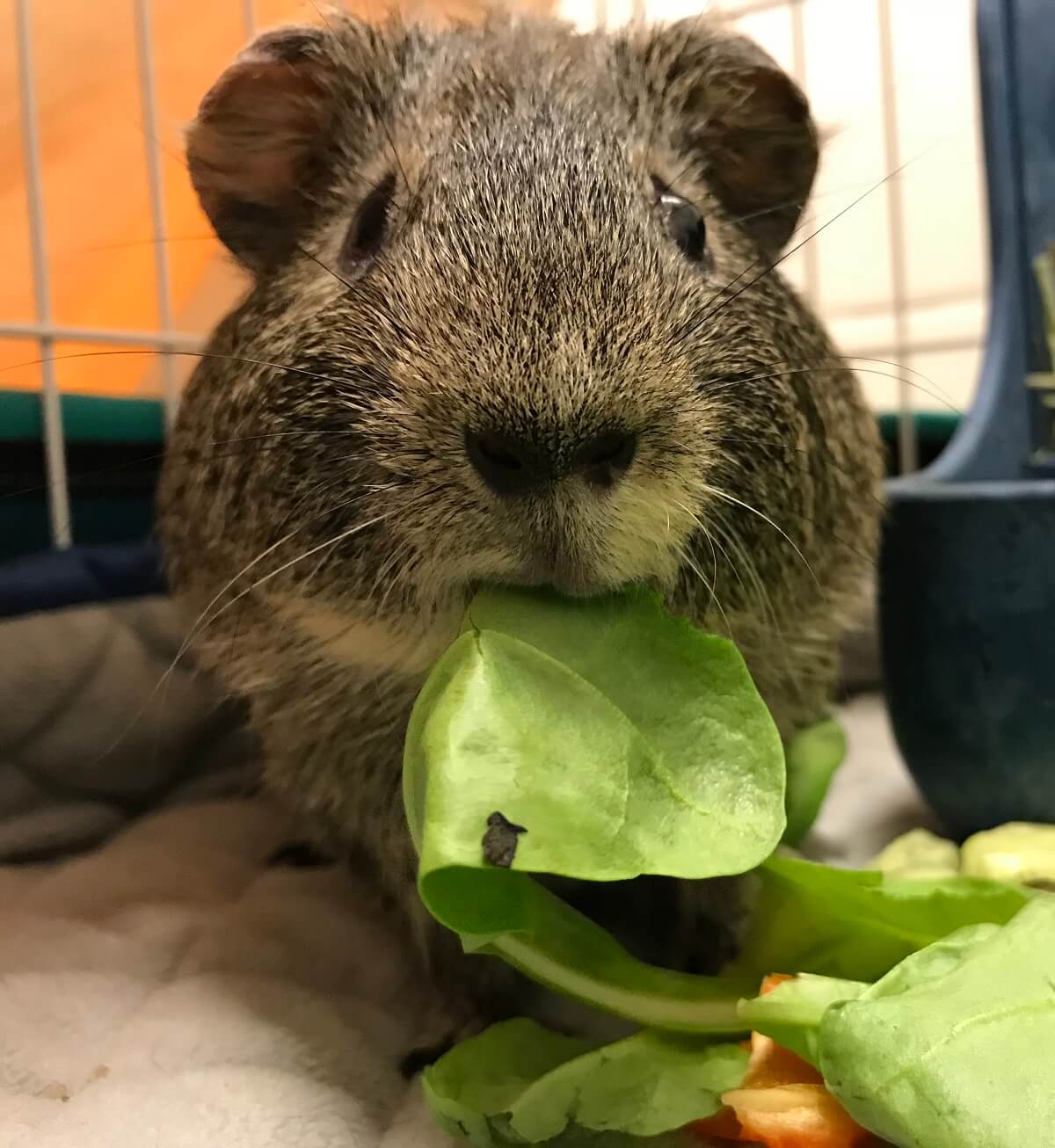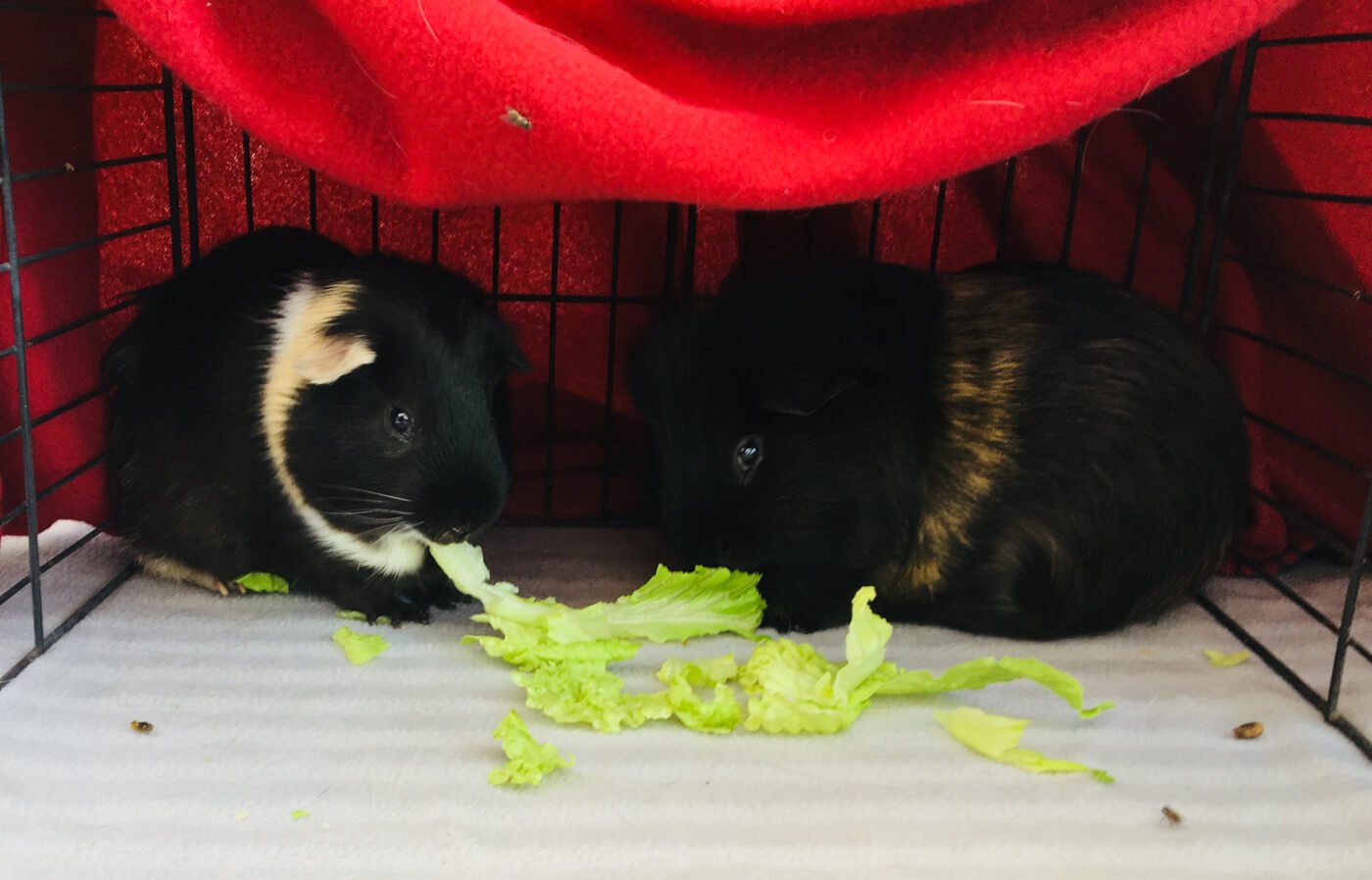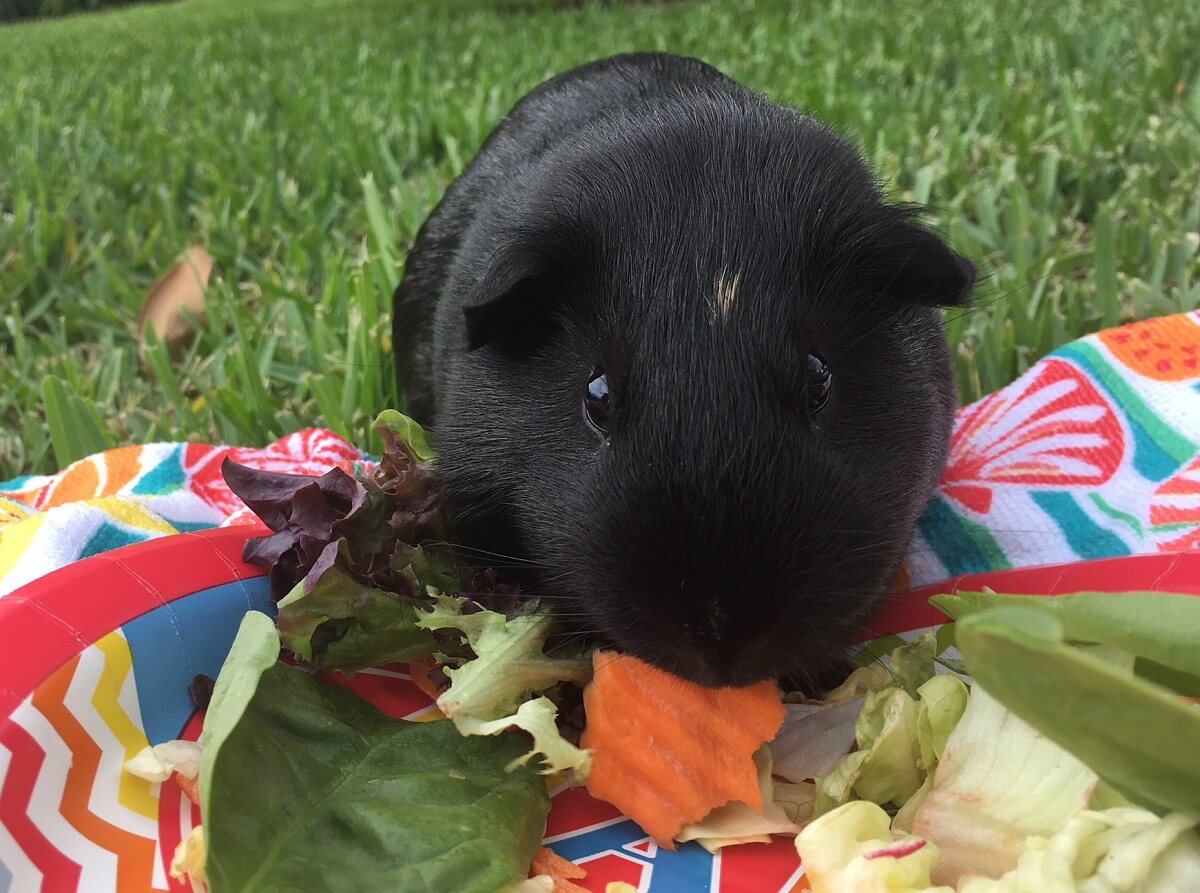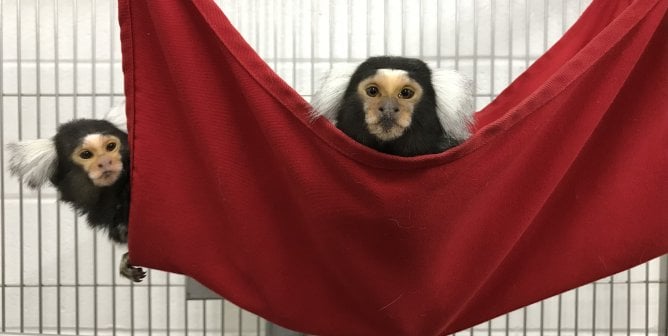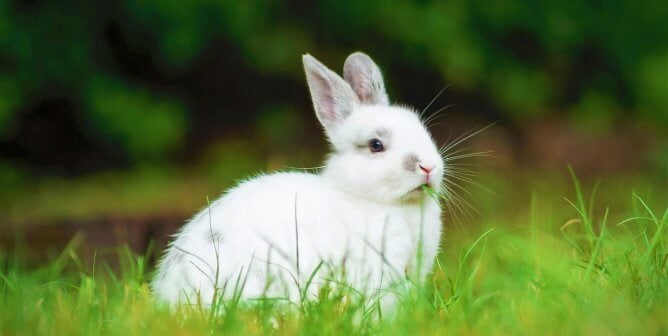What Do Guinea Pigs Eat? The Facts Every Pig Guardian Should Know
The internet has a lot of opinions about what foods are best for guinea pigs and what to avoid, so PETA is helping guardians determine what to feed their guinea pigs, how much, and how often.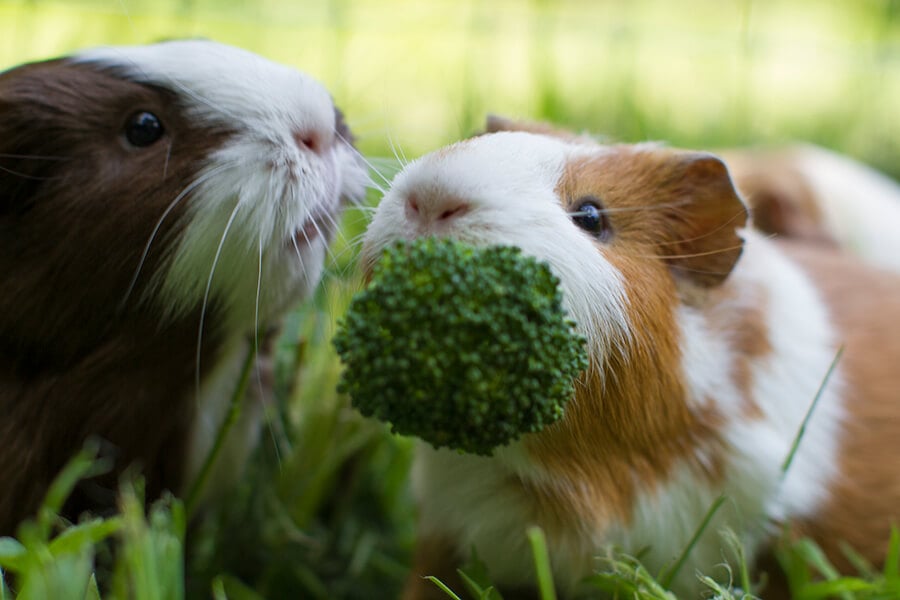
What Can Guinea Pigs Eat?
The bulk of a guinea pig’s diet should be high-quality grass hay, such as timothy or orchard, and timothy hay–based food pellets with no added seeds or colored pieces. Young guinea pigs should be offered alfalfa hay in addition to grass hay. Around 4 to 6 months of age, they can be weaned off the alfalfa hay slowly to give their digestive systems time to adjust. Young pigs should also have alfalfa-based pellets and can be weaned off those at the same time.
Since guinea pigs can’t store vitamin C, they have to get it from their daily diets. Guardians should make sure that the food pellets they choose are fortified and that pigs are also getting added vitamin C through vegetable treats. Often, that’s still not enough, so PETA recommends purchasing guinea pig–specific vitamins.
What Are Good Treats for Guinea Pigs?
Guinea pigs love fresh salads, vegetables, herbs, and fruits. You can experiment to find your animals’ favorites, and they may enjoy eating them from your hand or lap. Lettuces such as green leaf, red leaf, romaine, and Bibb are great daily choices. They can also have fresh, hand-cut grass that hasn’t been fertilized, sprayed with pesticides, or cut with a mower. Some pigs enjoy foraging in the yard (always under the care and supervision of a guardian) and may also find tasty weeds such as dandelion leaves and flowers, plantain, red deadnettle, chickweed, mallow, chamomile, cleavers, and chicory.
Other healthy vegetables and herbs can be offered in small portions a few times per week, including bell peppers, cilantro, carrots and carrot tops, zucchini and other summer squashes, collards, mustard greens, turnip greens, kale, fennel, radicchio, endive, cucumbers, broccoli, Brussels sprouts, Swiss chard, basil, and mint. Most guinea pigs love corn, especially the husks and silks. Just remove the outermost leaves, as they may have been sprayed with pesticides. Tomatoes, blackberries, strawberries, raspberries, blueberries, papayas, kiwis, bananas, and cantaloupes are great fruit treats to offer a few times a week.
The total amount of fresh fruit and vegetables in their diet shouldn’t exceed one cup per day, although guinea pigs can have more grass than that as long as they’re used to eating it.
What Foods Shouldn’t Guinea Pigs Have?
Other vegetables, herbs, and fruits are too high in sugar, calcium, or oxalates for guinea pigs to eat them weekly. They should only be offered in small portions two or three times per month. These include parsley, purslane, spinach, watercress, arugula, and beet greens.
They should never have meat, dairy, onions, leeks, potatoes, tomato vines or leaves, nuts, dried beans, candy, iceberg lettuce, rhubarb, bread, buttercups, or most vines, such as periwinkle and ivy.
Your exotic-animal veterinarian can answer any other questions about specific foods, guinea pig nutrition and exercise, and helping your pigs maintain a healthy weight. For more information, see PETA’s comprehensive guinea pig care guide here.

